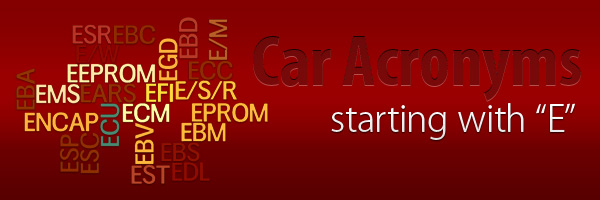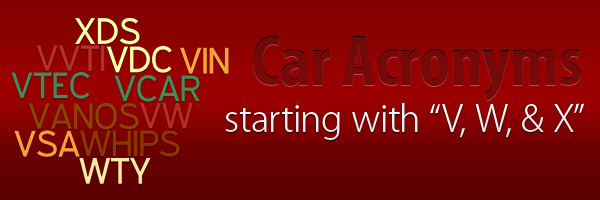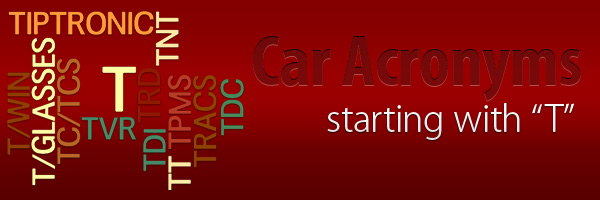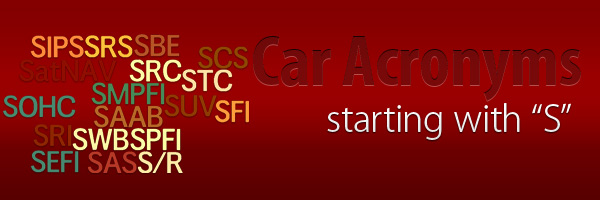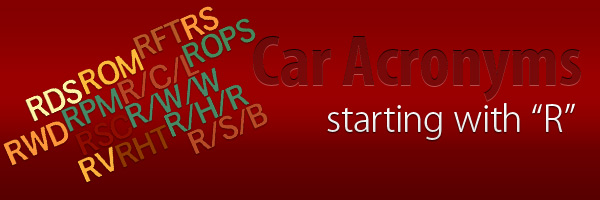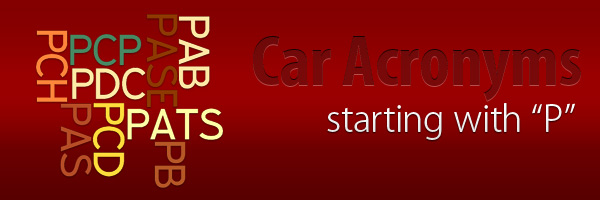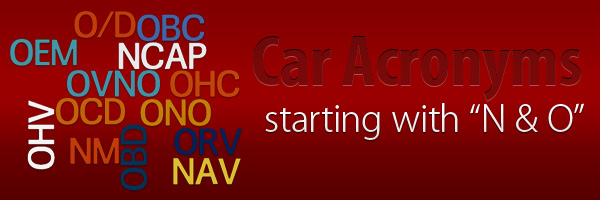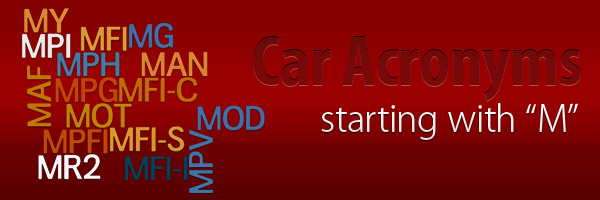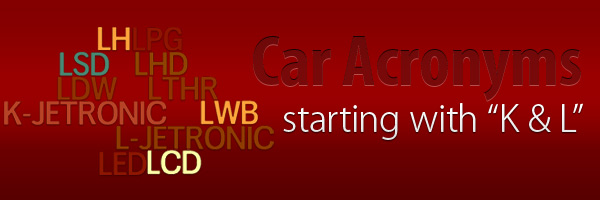EARS – Enhanced Accident Response System
This term refers to a system on a motor vehicle that allows for emergency persons to see and to make contact with occupiers in the case of an accident. An Enhanced Accident Response System functions by turning on the light inside of a vehicle and unlocking the doors after the air bag or air bags are deployed in the event of a car crash. Upon impact and after the air bag has deployed, this system will help emergency authorities or personnel to provide aid to injured occupants of the vehicle by unlocking all doors and turning on interior lights.
EBA – Electronic brake assist, helps maximize braking in an emergency
An electronic brake assist is used in emergency instances when the system notices that the brakes have been applied at an abnormally fast speed. Once the sensors at the brake pedal or the accelerator are activated, the system will add a full boost of pressure to the brakes which helps to lower braking reaction times in the case of a panicked braking condition.
EBC – Electronic brake force control (see EBD and EBV)
This term refers to a motorized vehicle’s brake technology that automatically shifts up the amount of force that is applied to the brakes depending in the speed of the vehicle or the conditions of the driving road. It may work in tandem with the anti-lock brake system (ABS) and the Electronic Stability Control (ESC) to minimize the vehicle’s rotation around its gravity center. EBC will administer more or less braking pressure based on the driving situation which will prevent the rear brakes from skidding or locking and will maximize the stopping power in an emergency.
EBD – Electronic braking differential or Electronic brake force distribution (see also EBC and EBV)
Electronic braking differential or electronic brake force distribution is a motorized vehicle braking technology that will automatically change the force pressure that is applied to each of the brakes. Based on road conditions and the speed of the vehicle, EBD will put more or less pressure on the brakes to accommodate the external conditions. This system often works alongside the anti-lock brake system (ABS) and the Electronic Stability Control (ESC) in order to maximize stopping power and prevent skidding or locking of brakes.
EBM – Electronic brake management system. Optimizes driving stability, traction, and braking function (BMW)
This term refers to a system used for keeping the application of fluid pressure to the brakes in check. An electronic brake management system has features for bettering the feel of the pedal system by providing an electrically driven root of pressurized hydraulic brake fluid. This system, in turn, promotes optimal driving stability by controlling the application of fluid to the brakes to increase traction and braking function.
EBS – Electronic braking system
This is a vehicle control system that incorporates the anti-lock brake system technology with automatic traction control to increase safety though reduced stopping distance and a better brake stability. An electronic braking system uses an electronic signal to replace the air signal sent by the brake pedal to apply the brakes; therefore, it reduces the stopping distance so braking performance is optimized.
EBV – Electronic brake force distribution (see also EBD and EBC)
This term refers to the brake technology of a motor vehicle that switches the amount of force that is applied to the brakes based on road conditions and speed. An electronic brake force distribution alters the amount of brake force that should be applied in the front and how much of the brake force gets applied to the rear of the vehicle. EBV can prevent skidding and wheel locking and should maximize the stopping power in the case of an emergency.
ECC – Electronic climate control
An electronic climate control is an air conditioning system which regulates and sustains the previously set temperature in the passenger compartment. This allows for an improved inside environment by facilitating a consistent temperature to be sustained; it presents the choice of having different temperatures on either side of the vehicle.
ECM – Electronic control module
This term refers to a computer system that can modulate a vehicle’s fuel system and emission system. The electronic control module works by rendering electrical signals sent by engine sensors to produce optimal execution. The ECM regulates fuel metering and timing of injection and adjusts the vehicle’s emissions.
ECU – Electronic control unit
This is the general term used to describe any integrated system that controls multiple electronic systems in a motor vehicle. Different kinds of electronic control units include the following: Body Control Module, Airbag Control Unit (ACU), Engine Control Unit (ECU), Brake Control Module (ABS or ESC), Speed Control Unit, General Electronic Module (GEM), etc. All of these electronic control units together increase the amount of sophistication the vehicle offers through the use of embedded systems.
EDL – Electronic Differential Lock
The Electronic Differential Lock allows for smoother starts on compromised or unhinged roads. This allows for more traction by locking both wheels, forcing both wheels to turn in conjunction no matter what the traction of each individual wheel might be. In the case of wheel spin, EDL applies brakes so that torque is sent to the wheel with the most traction.
EEPROM – Electrically erasable programmable read-only memory
This term refers to a kind of computer memory that can retain the information that has been stored even when the computer is not being powered. Electrically erasable programmable read-only memory can be frequently reprogrammed and erased in-circuit, and it does not need to be abstracted from the computer to be altered or modified. The life of an EEPROM is dependent on the frequency and amount of reprogramming done while the computer is in use.
EFI – Electronic fuel injection
The Electronic Fuel Injection system has three parts: fuel delivery system, air induction system, and the electronic control system. This is a fuel system that is controlled electronically to distribute fuel and to mix fuel with air in the internal combustion engine. This system injects fuel into the cylinders after measuring the engine’s fuel requirements.
EI – Electronic ignition
This term refers to a type of ignition system that eliminates the need for a standing-pilot, which saves energy. With an electric ignition, fuel is used only when it is needed, so it does not waste energy or fuel. This type of ignition system is lit with an electric spark.
EMS – Electronic Management System
This term refers a computer processing system used for exchanging information electronically and for storing electronic documents. This type of system is also ordinarily able to keep a record of different modified or altered versions by different users as a means of tracking user history.
E/M – Electric mirrors
Electric mirrors are externally placed mirrors on a car door. These are controlled by a motor that is electric, permitting the mirrors to be operated from inside of the vehicle with the use of a switch. This type of non-manual mirror is usually found in newer car models. Once an electric mirror has been set, it will not move until reset, and unlike older manual mirrors, electric mirrors are automated, so you do not have to adjust them yourself manually.
ENCAP – European new car assessment program – motor industry measurement/grading for car safety
The European New Car Assessment Program was formulated in the United Kingdom and is sponsored by, but not limited to, the following: the European Commission, the governments of the Netherlands, Sweden and the United Kingdom; motoring organisations, through the Alliance International de Tourisme (AIT) and Federation International de 1’ Automobile (FIA), among others. Euro NCAP has made available to the public overarching consumer information regarding the crash test performance of cars. This assessment program uses dummies to evaluate the safety of occupants and pedestrians in a car crash.
EPROM – Erasable programmable read-only memory, programmable or erasable with UV light
Erasable programmable read only memory is a type memory chip with non-volatile computer memory, which means information can be retained even when the computer is not powered. This chip is an array of field-effect transistors that are programmed individually by a device that is electronic. EPROMs have a telltale transparent fused quartz window in the very top of the package, where the silicon chip can be seen. After an EPROM is programmed, it can be erased by disclosing it to a strong UV light.
ESC – Electronic stability control
This term refers to a technology that is run by computers to improve the safety of a motor vehicle’s stableness by determining when the vehicle is skidding and by preventing traction loss in the event of potential skidding. When electronic stability control notices that steering control has become compromised, it will automatically employ the brakes in order to aid the driver in steering the vehicle to the intended destination. While ESC does not help to better the cornering performance of a vehicle, it does help the driver regain control by applying brakes to individual wheels automatically and helps to stabilize the vehicle.
ESP – Electronic stability programme, another designation for vehicle-dynamics control (FDR)
This term refers to a system that joins two key safety systems into one unit by uniting the ABS and the TCS functions. Sometimes referred to as Vehicle Dynamics Control (VDC), this system enhances vehicle stability and stops a vehicle from skidding or sliding on the road. The electronic stability programme is an electronic computerized technology program that notices if a vehicle’s stability is compromised or when steering control is lost and applies the brakes to aid in the steering process.
E/S/R – Electric sunroof
This term refers to an opening in the roof of a motor vehicle that lets light and air into the vehicle compartment either by way of a fixed opening in the top of the car or by way of a venting or sliding roof. Electric sunroofs are opaque panels that slide backward and open entirely when a button is pressed inside of the vehicle. A sliding electric sunroof is available in many types of vehicles or may be installed to a vehicle roof in some cases.
ESR – Electronic slip reduction, another name for ASR
ESR is an electronic management system that stops inordinate slippage of the driving wheels, which enhances lateral stability of the rear axle. This form of regulation and traction control uses an Anti-lock Brake System and an Electronic Accelerator to improve traction and maintain driver control of the vehicle. Electronic slip reduction detects, through the use of sensors, when wheels are spinning or are about to spin. In the case of wheel spin, the ESR will help the vehicle to regain traction.
EST – Estate
This term refers to a type of car that has a relatively long body and has a door at the back complete with folding seats. An estate car contains a large space at the back with the ability to store objects and retrieve them through the rearmost door. The seats in this car can typically be folded to make more carrying room.
E/W – Electric Windows
This term refers to the windows on a motorized vehicle that can either be raised or lowered using a switch or button that is inside of the vehicle. Electric windows are often called power windows as well. These types of windows have become the standard in most street cars and commercial cars because they require less manual force to operate. Instead of using a hand-turned crank to open and close car windows, the electric windows are powered electrically, and therefore, are operated by the driver or passengers by simply depressing a switch inside of the vehicle.

